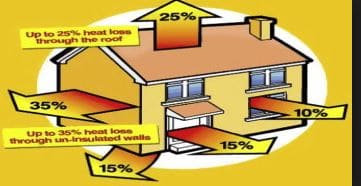What is Affordable Concrete House Construction?
Affordable concrete house construction is needed at current times more than ever before due population growth, depletion of energy source, and other factors. The population growth leads to increase demand for houses which consequently the use of operational energy and embodied energy increases.
Affordable concrete house construction has become the attention of several builders. This attention is largely focusing on sustainability, reasonable price, green building, disaster resistance, energy conservation, and safety. This is because judging concrete house affordability by the selling price is starting to change as more attention is on the operation costs over time.
Several construction techniques have been investigated so as to construct affordable concrete house. For example, precast concrete construction method which is used in Kenya and India to build affordable concrete houses, and insulated concrete forms house have been developed to construction low cost and sustainable houses.
Table of Contents
Factors Influence Concrete House Construction Affordability
1. Natural Disaster
Codes and standards set minimum requirements for concrete houses built in areas prone to natural disaster like hurricane, wind, and fire.
The goal is to reduce the risk from all types of natural disasters and making homes safer. It also increases their affordability because they do not have to be replaced due to the effects of natural disasters.

Fig. 1: Safety of a house endangered by flood
2. Cost of Energy for Running the House
At the time of depletion of energy resources, the energy to heat and cool homes is becoming increasingly costlier and directly affecting the cost of ownership over time.
Owners and renters want to live in more energy-efficient and cost-efficient housing. So, it is required to build concrete houses that require less energy during its life span in order to improve the affordability of concrete houses.

Fig. 3: Operational Energy Dissipation in a House
3. Cost of Concrete House Construction
Obviously, low cost of concrete house construction is one of the major factors that controls the affordability of concrete house. Consequently, ordinary residents can own a house. That is why construction companies and builders are continuously looking for new construction technique that require low cost.
In summery, the cost of concrete house construction shall be kept low in order to construct affordable concrete houses.
Concrete House Construction Methods
It is clear that the increase of population lead to increase house demand. Consequently, the use of materials and both operational and embodied energy would increase.
The energy used for manufacturing and transportation of building materials, and construction on site is called embodied energy which constitute around 10 to 20% of the total energy of the house over 50 years.
Therefore, efficient construction method is one of the approaches through which affordable houses can be constructed. In this regard, two different construction methods are discussed namely insulated form concrete construction and precast concrete construction method.
1. Insulated Form Concrete Construction Method
Insulated concrete form houses is assumed to be one of the best construction approaches that can play significant role in the construction of affordable houses. Insulated concrete forms are rigid foam forms that hold concrete in place during curing and remain in place to serve as thermal insulation for concrete walls.
The insulate form concrete house construction is slightly expensive compare with standard wood frame construction but this is offset by crucial savings in other ways.
The foam blocks are lightweight and result in durable, energy-efficient construction. The insulated form concrete houses are affordable, storm resilient, construct quickly, and energy efficient.
2. Precast Concrete Construction Method
Generally, precast concrete results in better controlled quality, require low maintenance, long service life, and flexibility in design. More importantly, it requires less quantity of steel, cement, water, and labor in comparison with cast in situ concrete.
Precast concrete elements demonstrate significant performance in hot environment. It insulates sound waves and eats heat then gradually release it back into air. Therefore, it can be concluded that precast concrete construction saves concrete and energy.
No comments:
Post a Comment